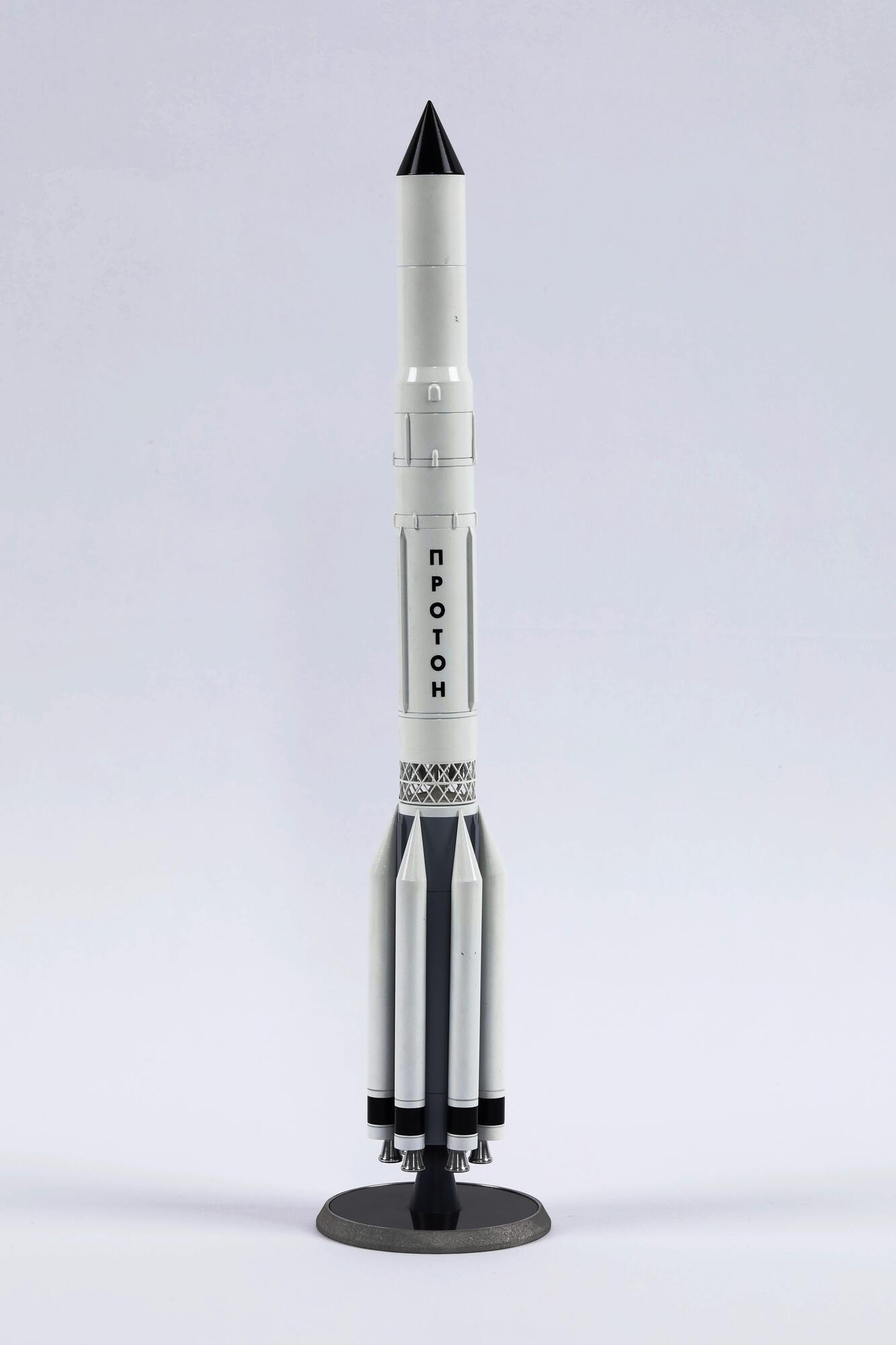Rockets of a range of different sizes are used to launch equipment into space, depending on the equipment’s size and mass. There are light, medium and heavyweight rockets. Heavyweight rockets are used to launch large satellites into orbit (especially for high orbits), as well as for interplanetary probes and sections of space stations.
Model of the Proton launch vehicle
Время создания
2000-2010s
Размер
42x5,5x5,5 cm
42 х 5,5 х 5,5 cm
42 х 5,5 х 5,5 cm
Техника
Small-scale industrial production
Коллекция
Выставка
4
Открыть в приложении#1
Model of the Proton heavyweight launch vehicle, scale 1:150
#6
#7
The Proton launch vehicle is a true legend in the Russian rocket industry. It has been in operation for half a century, and has been used for the launch of a range of different satellites and spacecraft: Proton rockets have launched both military and civilian satellites into orbit, as well as all the Soviet Salyut and Almaz space stations and the various modules of the Mir and International Space Stations, and interplanetary probes and space telescopes (Spektr-R, Spektr RG). In total, these rockets have been used for 420 launches.
#8
The Proton rocket was based on the earlier two-stage UR-500 Universal military rocket, which was designed in the 1960s by Experimental Design Bureau-52, headed by Vladimir Nikolaevich Chelomey. July 16 1965 saw the first successful launch of the rocket with an active payload — the Proton-1 satellite. The rocket was subsequently named after the satellite. In 1967 a modernized version, the Proton-K was introduced. It differed from its predecessor in that it had three stages. On April 7 2001 the first Proton-M rocket - a heavyweight launch vehicle with improved operational and environmental specifications.
#9
The Proton-M is currently the most powerful and has the largest capacity of all Russian rockets. Together with the Briz-M upper stage rocket (which functions, in effect, as a fourth stage) the Proton-M can launch a payload of up to 22 tons into low earth orbit, or a payload of up to 3.3 tons into geostationary orbit. Because of its power and the fact that it is a relatively cheap solution, the Proton-M is in great demand for rocket launches internationally In the 1990s each commercial launch cost between 80 and 100 million dollars. In 2015 this price was decreased to 65 million dollars, in order to compete with the Falcon 9 rocket operated by Elon Musk’s SpaceX.
#10
It is planned that the Proton will be replaced by the Angara rocket in the mid 2020s. It is important to upgrade to a new rocket because the fuel which the Proton runs on contains toxic chemicals, and also because it is launched from the Baikonur launch site in Kazakhstan.
#11
Ministry of Culture of the Russian Federation
читать дальшескрыть
00:00
00:00
1x
Model of the Proton launch vehicle
Время создания
2000-2010s
Размер
42x5,5x5,5 cm
42 х 5,5 х 5,5 cm
42 х 5,5 х 5,5 cm
Техника
Small-scale industrial production
Коллекция
Выставка
4
Открыть в приложении
Поделиться



